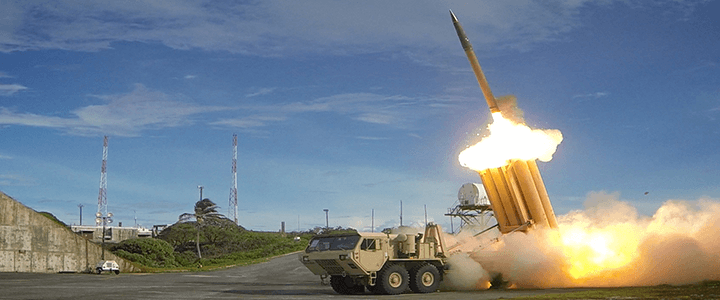Happy birthday, America. Kim Jong Un got you a present: a shiny new intercontinental ballistic missile. North Korean state media announced that its military launched the missile from an airfield in northwestern Korea, sending it on a 37-minute flight that ended in Japanese territorial waters 578 miles to the east.
The launch sends the standoff over North Korea’s nuclear program into new territory. Experts believe this new missile would be capable of reaching Alaska, but not the continental United States. Still, the development is one more piece in the complex and increasingly distressing nuclear puzzle.
As concerning as this development is, we’re still a long way from a real threat to the U.S. from a Korean nuclear missile. Obviously, they have developed a nuclear warhead. We do not know, however, if they have a reliable nuclear warhead that will fit on the nose of their new missile. And we do not know if they can successfully separate the warhead from its booster, or it it can survive the extreme heat of reentry into the atmosphere.
THE U.S. PROBABLY KNEW THIS WAS COMING
And looking at the record, the U.S. intelligence community likely had some idea this was coming. On June 20, President Trump tweeted “While I greatly appreciate the efforts of President Xi & China to help with North Korea, it has not worked out. At least I know China tried!” This tweet’s unusually ominous tone raised some eyebrows at the time.
The tweet came the day after the death of University of Virginia student Otto Warmbier. The North Korean regime imprisoned Warmbier for 18 months, most of it while he was in a coma, on bogus charges. Even a the time, though, it seemed as though Trump’s words were about more than the Warmbier situation.
Last Friday, Trump hosted South Korean President Moon Jae-in at the White House. In a Rose Garden appearance, Trump warned “the era of strategic patience is over.”
And Sunday night, the president had what the New York Times described as a “cordial but blunt phone call” with Chinese leader Xi Jinping. In the call, the president reportedly repeated that the U.S. is willing to act unilaterally to counter the North Korean nuclear threat.
Add all this together and you get a picture not of saber-rattling, but of an administration that knew North Korea was on the brink of a new, and more dangerous, missile test, and was trying to tell Pyongyang that it knew.
WHAT DOES THIS MEAN FOR THAAD?
South Korea has been going through its own domestic crisis, with serious implications for American defense policy. President Moon only came to power in May, in an election brought on by the March impeachment of his predecessor, Park Geun-hye. After less than a month in office, Moon halted the deployment of the Terminal High-Altitude Air Defense System, which can defend U.S. forces, and the region, from a ballistic missile threat.
The U.S. has deployed the control system and two of six missile batteries to the Korean peninsula. Moon is using environmental impact statements as a pretext for the move, but it’s more likely that he is bowing to pressure from the Chinese and Russians who believe THAAD is destabilizing the region. It’s hard, though, to imagine anything more destabilizing than Kim Jong Un with nuclear weapons and the means to employ them.
Sanctions and international pressure are having little effect on the North Koreans. Despite every attempt by the United States and its allies, the nuclear development program continues, seemingly at an accelerated pace. It is becoming clear that we will not succeed in preventing this program from reaching its goal. It is also clear that the decades-old doctrine of mutually-assured destruction will not work with an irrational regime like Kim’s.
The only options are preemptive strike—which absolutely no one thinks is a good idea—or a robust defense. THAAD is a critical component of that defense. Moon needs to let go of his reservations and allow the the U.S. to deploy the system fully.




